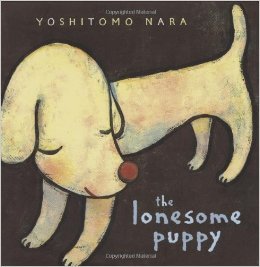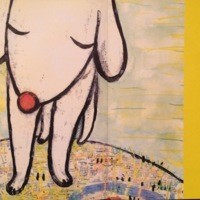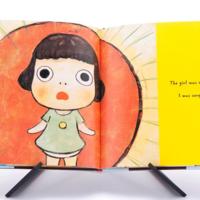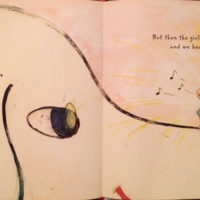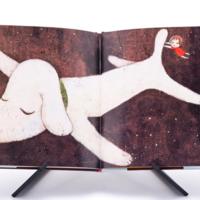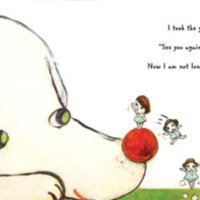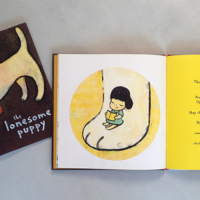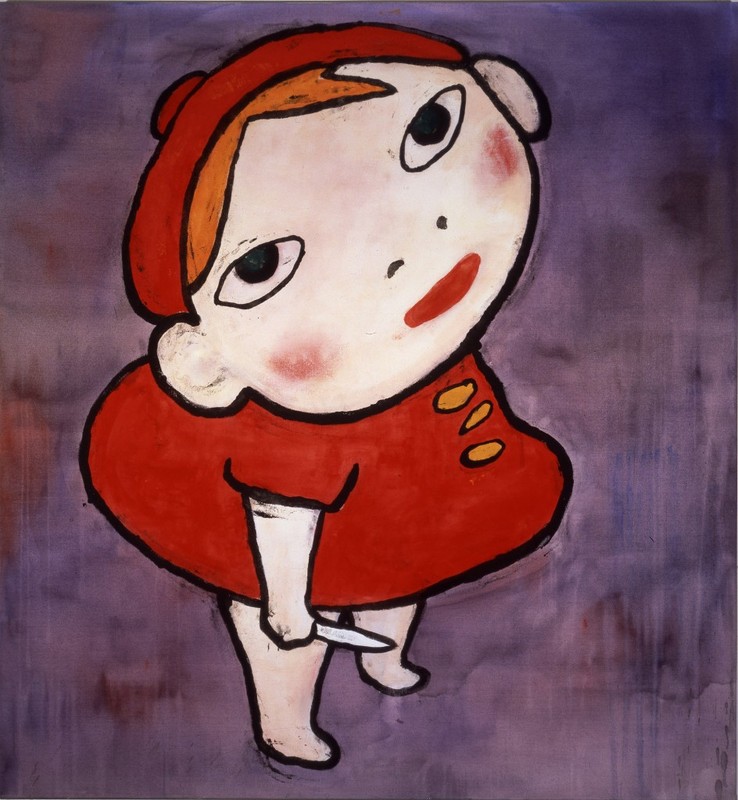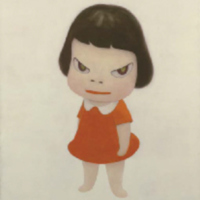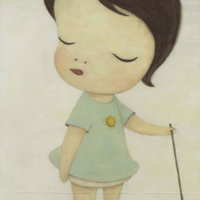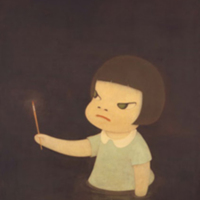
Japanese Modernism Across Media
Youth & Loneliness
While Nara’s paintings are usually associated with anime and manga such as Speed Racer, he is actually most strongly influenced by Disney, Warner Brothers, and the childrens’ picture books he read to entertain himself while his parents were away at work (Chambers). In fact, he denies the assumptions of manga influences. Instead, he cites Aesop’s Fables, Hans Christian Anderson fairytales, The Little House by Virginia Lee Burton, German picture books, and various Japanese children’s books as his favorites.
In 1999, Nara wrote and illustrated a picture book of his own called The Lonesome Puppy. In the book, he tells the tale of a gigantic dog who is extremely lonely and sad because he is too large for people to notice him. Eventually, a little girl notices him and makes the effort to befriend him. This story stems from Nara’s own lonely childhood. As mentioned earlier, during the post-war period when Nara was growing up, children were often left to their own devices by their parents who were at work all day and unable to supervise them.
Please read the visual essay "Yoshitomo Nara's Lonesome Puppy" on the next page for a more detailed analysis of this book.
Nara was inspired to create his signature images of angry little girls during the time he spent in Germany. He lived there for twelve years and felt very alone. This loneliness Nara felt reminded him of his childhood in Japan, manifesting itself into the images we have today. These images show the solitary little girls alone on the canvas, “floating” and surrounded by blank space.
When asked if his subjects are dangerous aggressors, such as in works like The Girl with the Knife in Her Hand (1991), Nara says, “Look at them, they are so small, like toys. Do you think they could fight with those? I don’t think so. Rather, I kind of see the children among other, bigger, bad people all around them, who are holding bigger knives....” (Besher).
